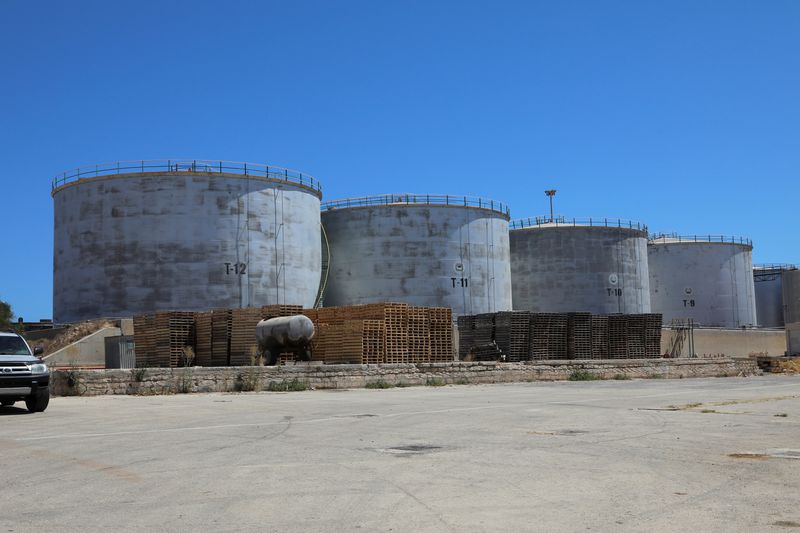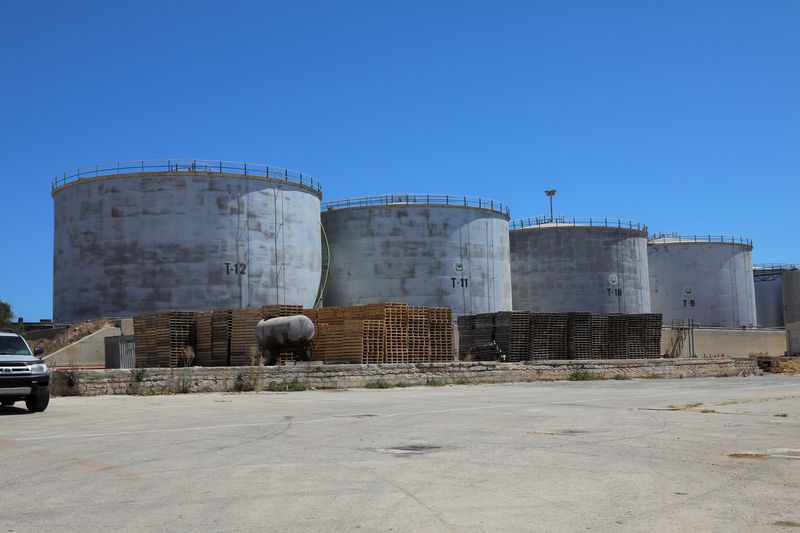
By Paul Carsten
LONDON (Reuters) -Oil prices slipped on Tuesday after rebounding more than 7% over the previous three sessions on supply concerns prompted by fears of widening Middle East conflict and a potential shutdown of most of Libya’s oil fields.
Brent crude futures were down 47 cents, or 0.58% at $80.96 a barrel by 1311 GMT. U.S. West Texas Intermediate crude futures dropped 54 cents, or 0.7%, to $76.88.
After the jump in oil prices on the back of geopolitical risk in the Middle East and a production halt in Libya, market participants are now holding back to assess further developments, said IG market strategist Yeap Jun Rong.
The 7% rise in Brent and 7.6% rise in WTI in the previous three sessions bucked a broader downtrend since hitting its 2024 peak of $91.17 in April. The downturn was driven by concern over global crude demand, particularly from China and through the summer, which is typically a peak demand period.
In Libya, the El Feel oilfield halted output, engineers told Reuters on Tuesday. On Monday, authorities in the country’s east, where most of its oilfields lie, threatened to close them all, halting production and exports, after a flare-up in tensions over leadership of the country’s central bank. Those fields are responsible for almost all the country’s 1.17 million barrels per day of crude output.
The jump in Brent has primarily been driven by short-term supply worries at the same time the weak demand outlook, especially for diesel, has driven down refinery margins across the world, said Ole Hansen, head of commodity strategy at Saxo Bank.
“It highlights an oil market that, without a prolonged Libyan supply disruption, may struggle to move much higher, with the mid-80s potentially providing a ceiling for now,” Hansen added.
There was no confirmation from the internationally recognised government in Tripoli or from National Oil Corp (NOC), which controls the country’s oil resources.
Oil has also been supported by an escalation in conflict between Israel and Iran-backed Hezbollah, with a major exchange of missiles after the killing of a senior Hezbollah commander last month.

“Markets remain on edge as skirmishes between Israel and Hezbollah intensify,” ANZ analysts said in a note.
A top U.S. general said on Monday that the danger of a broader war had eased somewhat but that an Iran strike on Israel remained a risk.
This post is originally published on INVESTING.




